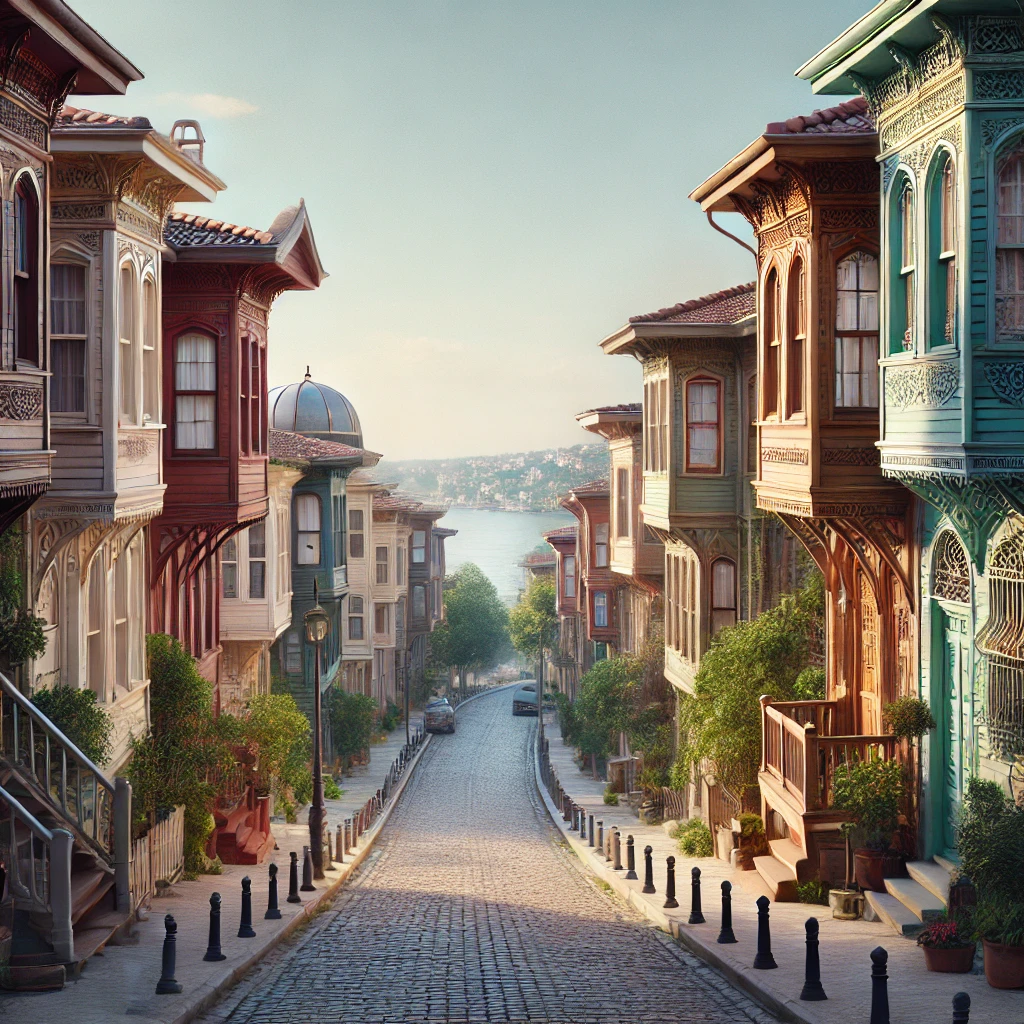Discovering Arnavutköy’s Iconic Wooden Houses: A Glimpse into Istanbul's Architectural Heritage
Arnavutköy and Kuruçeşme, two enchanting neighborhoods on the European side of Istanbul, are known for their rich history, unique architecture, and breathtaking views of the Bosphorus. Often regarded as some of the most beautiful districts along the Bosphorus, these areas offer a mix of old-world charm and modern sophistication, making them a must-visit for any traveler exploring Istanbul.
The Timeless Beauty of Arnavutköy
Arnavutköy’s Historical Roots
Arnavutköy, once known as “Melekler Köyü” or “Village of Angels,” has a history that dates back to ancient times. The neighborhood’s name has evolved over the centuries, reflecting its changing roles and populations. From its Roman origins as “Promotu” to its later name “Anaplous,” Arnavutköy has always been a significant settlement along the Bosphorus. The area was known for its vineyards and later became famous for its strawberries in the 19th century.
The Iconic Wooden Houses of Arnavutköy
One of the most defining features of Arnavutköy is its stunning wooden houses. These elegant structures stand as a testament to the neighborhood’s resistance to modern urbanization. Many of the houses date back to the early 20th century, with some reflecting the Art Nouveau style. Walking through the streets of Arnavutköy, you’ll feel as though you’ve stepped back in time, surrounded by architecture that has remained largely unchanged for decades.
Taksiyarhis Church: A Piece of Byzantine History
Arnavutköy is home to several historical religious sites, including the Taksiyarhis Church. This grand structure, originally built during the Byzantine era and later rebuilt by Muzurus Pasha, is dedicated to the Archangels (Taksiarkhes). With its dome reminiscent of a mosque and a bell tower at the entrance, Taksiyarhis Church is a fascinating blend of architectural styles.
Arnavutköy Mosque: A Gift from Sultan Mahmud II
At the western end of Arnavutköy’s shoreline stands the Arnavutköy Mosque, also known as the Tevfikiye Mosque. Built in 1832 by Sultan Mahmud II, this mosque was constructed before the Muslim population settled in the area and was intended for the soldiers stationed at the nearby barracks. Adjacent to the mosque is the Süslü Karakol, a 19th-century stone police station.
The Enchanting Path from Arnavutköy to Kuruçeşme
Walking Through History: Kuruçeşme’s Evolution
A short walk from Arnavutköy leads you to Kuruçeşme, a neighborhood with a rich history of its own. The area is believed to have derived its name from the Köprülü Hemşire Fountain, built in the 17th century next to the Tezkireci Osman Efendi Mosque. Once a lush, green area known as “Koruçeşme,” the neighborhood eventually adopted the name Kuruçeşme after the fountain dried up and the greenery diminished. Today, Kuruçeşme is a vibrant, stylish district that has transformed from a coal and mineral storage area into a chic and popular locale.
Kuruçeşme Sahil: A Scenic Stroll Along the Bosphorus
One of the highlights of visiting Kuruçeşme is walking along the beautifully renovated promenade. The Kuruçeşme Sahil offers stunning views of the Bosphorus, and you can admire luxurious yachts anchored along the shore. The scenery includes the fairy-tale-like Kuleli Military High School in the background, adding to the charm of the walk.
Historical Churches in Kuruçeşme
Kuruçeşme is also home to several historical churches, including the Armenian Surp Haç Church. Built in 1881 by Garabet Balyan on the site of an earlier church, this rectangular stone and brick structure is a significant landmark. Further along, you’ll find the Aya Demetrios Church, which dates back to 1789. This church was built on the site of a controversial seminary that was later moved to Heybeliada in 1804.
The Exclusive Suada: A Luxury Island Experience
Suada: A Unique Island Getaway
Located directly opposite Kuruçeşme’s coast, Suada is a small island with a fascinating history. Once the private property of Armenian architect Sarkis Balyan, who was gifted the island by Sultan Abdülhamid II, Suada has undergone many transformations. Originally home to a two-story mansion, the island now hosts a luxury restaurant and nightclub complex known as Suada. This exclusive destination offers visitors the chance to enjoy fine dining and nightlife with stunning views of the Bosphorus.
Nearby Attractions: Exploring More of Istanbul’s Bosphorus
Robert College: A Legacy of Education
High above Arnavutköy, on a hill overlooking the Bosphorus, stands the prestigious Robert College. Founded in 1871, this institution has educated some of Turkey’s most prominent figures, including Halide Edip Adıvar and former Prime Minister Tansu Çiller. The campus, with its historical buildings and beautiful surroundings, is a must-see for those interested in the history of education in Istanbul.
The Red Mansion: A Glimpse into the Past
As you walk from Arnavutköy to Kuruçeşme, you’ll encounter the Red Mansion, a striking building constructed in the 1830s for Sultan Mahmud II’s Armenian gardener. Today, the mansion is part of Marmara University, but it remains a beautiful example of 19th-century architecture along the Bosphorus.
How to Reach Arnavutköy and Kuruçeşme
Both Arnavutköy and Kuruçeşme are easily accessible by public transportation. From Beşiktaş, you can take a bus along the Bosphorus that stops at both neighborhoods. Alternatively, you can walk from nearby districts like Bebek or Ortaköy. For those on the Asian side, ferries from Üsküdar and Kadıköy to Arnavutköy and Kuruçeşme offer a scenic way to cross the Bosphorus.
Conclusion: Discover the Timeless Allure of Arnavutköy and Kuruçeşme
Arnavutköy and Kuruçeşme are two of Istanbul’s most charming neighborhoods, each offering a unique blend of history, culture, and natural beauty. Whether you’re exploring the elegant wooden houses of Arnavutköy, strolling along the Kuruçeşme promenade, or enjoying a luxurious evening at Suada, these districts provide an unforgettable experience of Istanbul’s Bosphorus.
For more information on planning your visit to Arnavutköy, Kuruçeşme, and other beautiful destinations in Türkiye, be sure to check out the Travel Guide of Türkiye.
Latest Update: Aug 18, 2024
Your Content Goes Here
A brief summary of the key points in this article.




